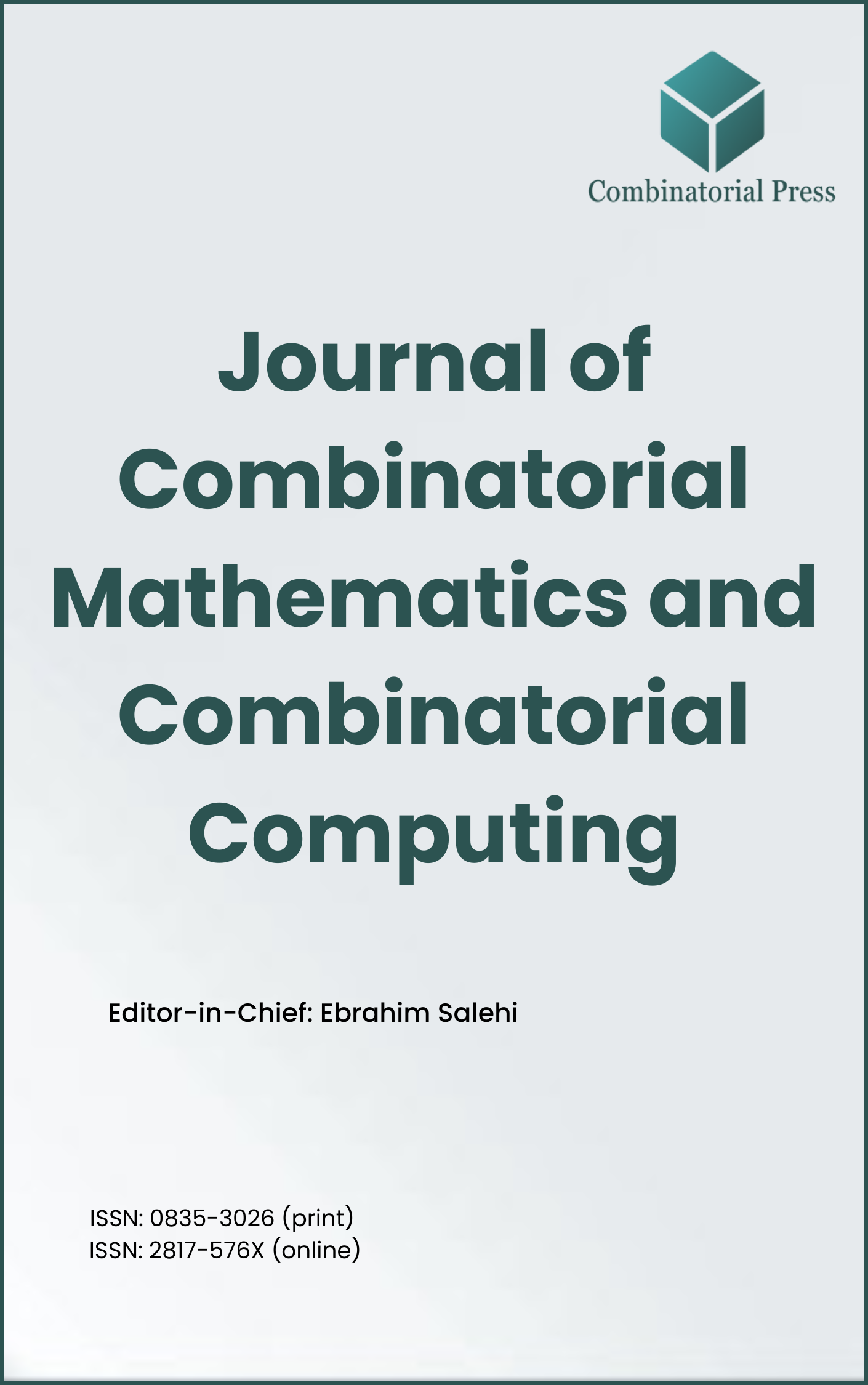
Journal of Combinatorial Mathematics and Combinatorial Computing
ISSN: 0835-3026 (print) 2817-576X (online)
The Journal of Combinatorial Mathematics and Combinatorial Computing (JCMCC) embarked on its publishing journey in April 1987. From 2024 onward, it publishes four volumes per year in March, June, September and December. JCMCC has gained recognition and visibility in the academic community and is indexed in renowned databases such as MathSciNet, Zentralblatt, Engineering Village and Scopus. The scope of the journal includes; Combinatorial Mathematics, Combinatorial Computing, Artificial Intelligence and applications of Artificial Intelligence in various files.
Information Menu
- Research article
- Full Text
- Journal of Combinatorial Mathematics and Combinatorial Computing
- Volume 001
- Pages: 23-66
- Published: 30/04/1987
- Research article
- Full Text
- Journal of Combinatorial Mathematics and Combinatorial Computing
- Volume 001
- Pages: 13-22
- Published: 30/04/1987
In assessing the “vulnerability” of a graph one determines the extent to which the graph retains certain properties after the removal of a number of vertices and/or edges. Four measures of vulnerability to vertex removal are compared for classes of graphs with edge densities ranging from that of trees to that of the complete graph.
- Research article
- Full Text
- Journal of Combinatorial Mathematics and Combinatorial Computing
- Volume 001
- Pages: 5-11
- Published: 30/04/1987
Lander conjectured: If D is a \((\text{v,k},\lambda)\) difference set in an abelian group \(G\) with a cyclic Sylow \(p\)-subgroup, then \(p\) does not divide \((v,n)\), where \(\text{n = k}-\lambda\).
Various nonexistence theorems are used to verify the above conjecture (all hand calculations) for \(\text{k} \leq 500\), except for \(\text{k} = 228, 282\) and \(444\), when \(\lambda = 3\). Using a machine, it is possible to do the checking for large \(k\).





